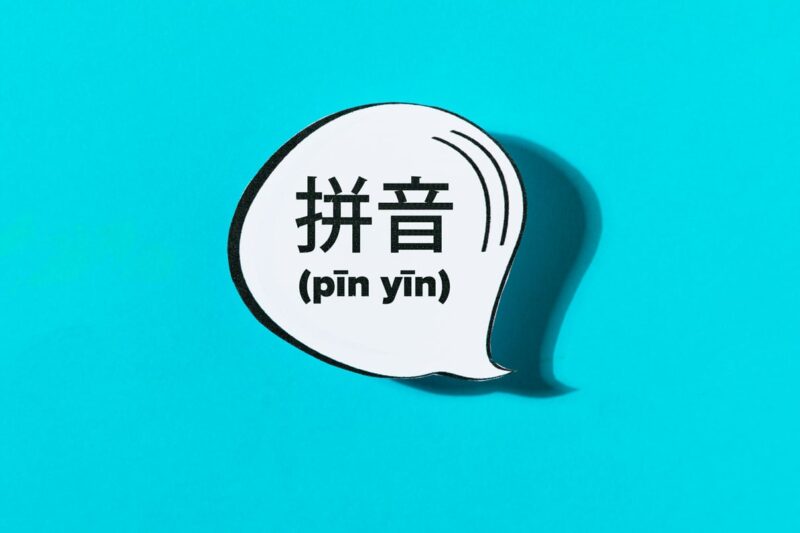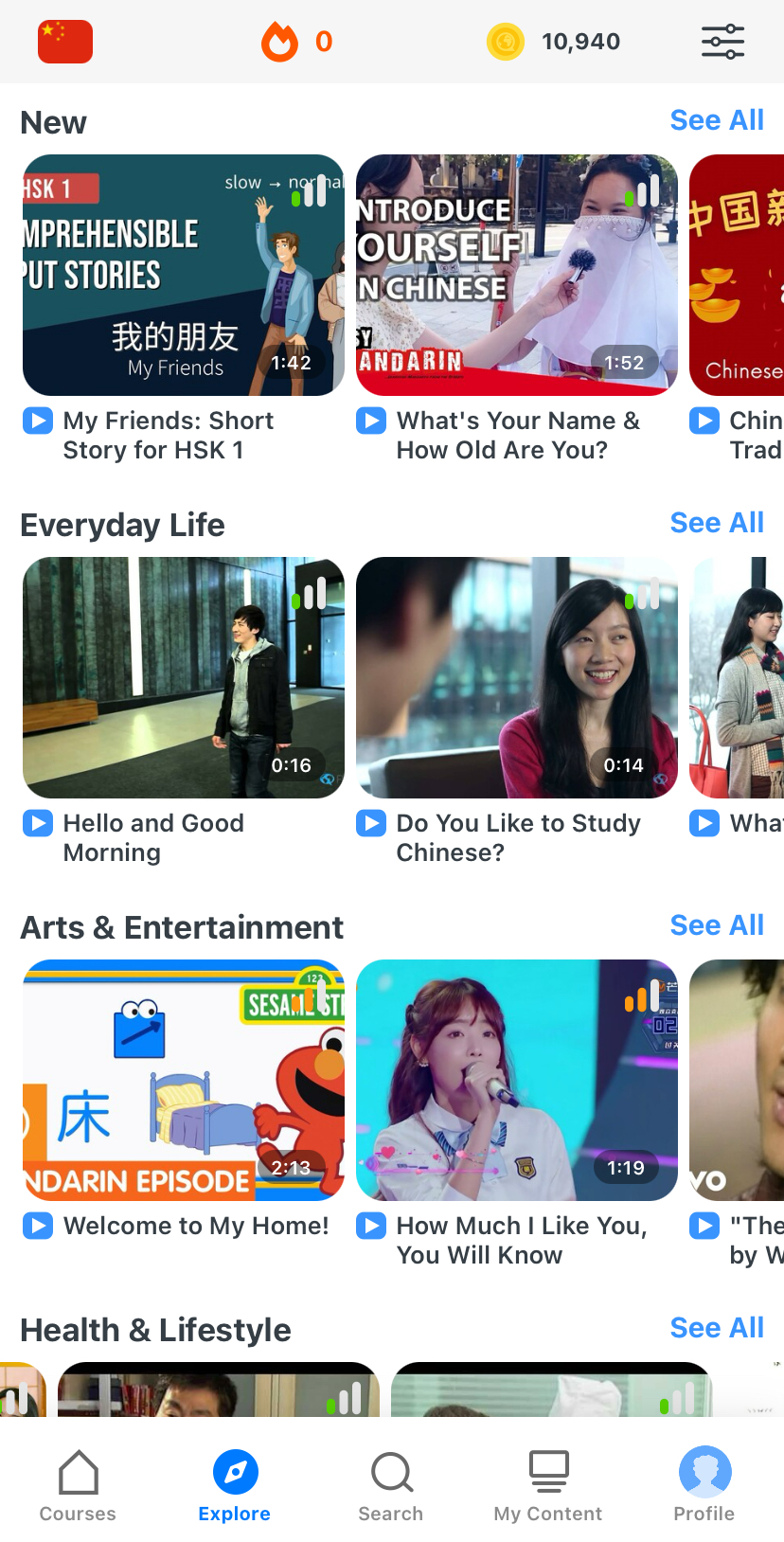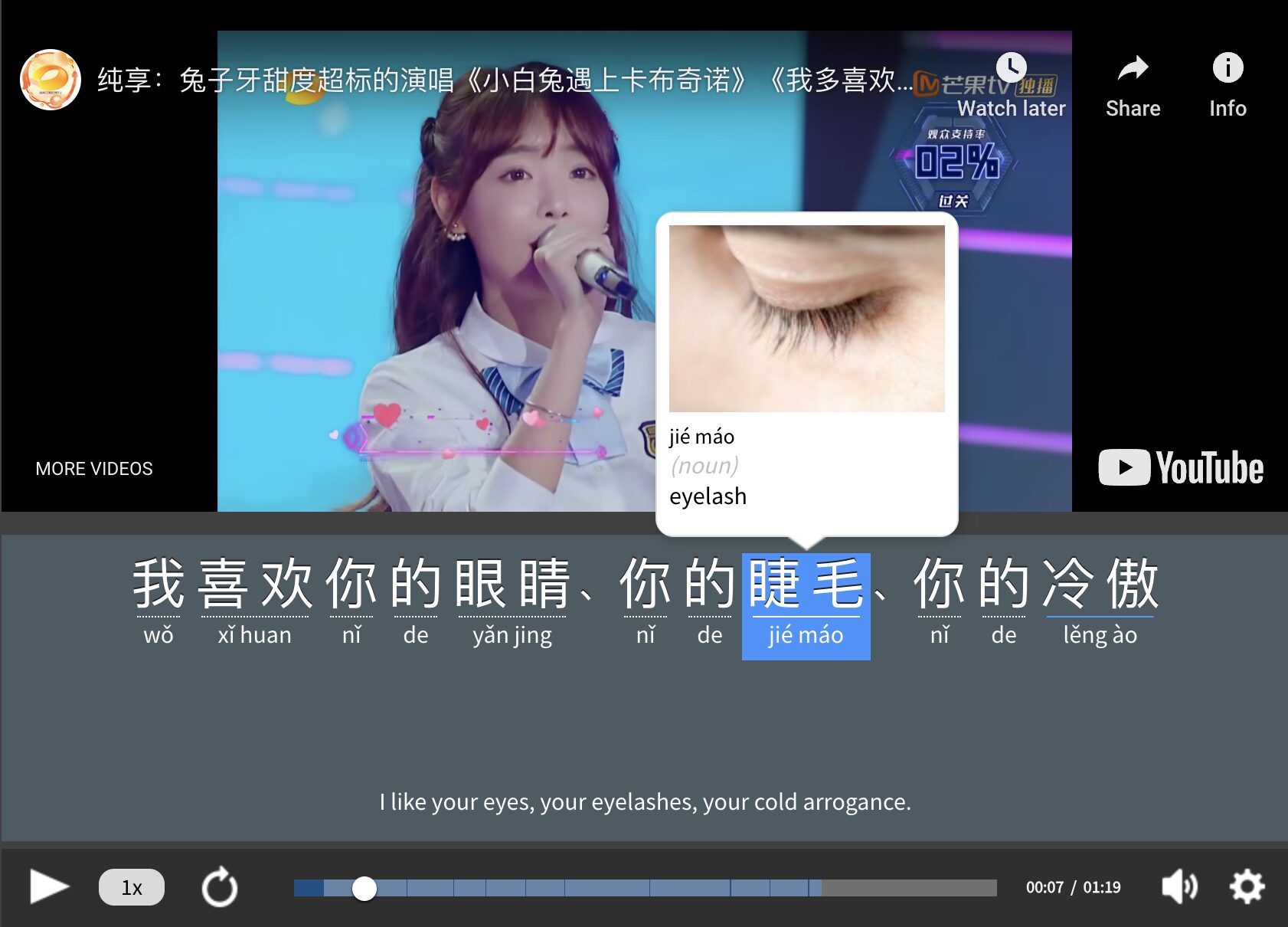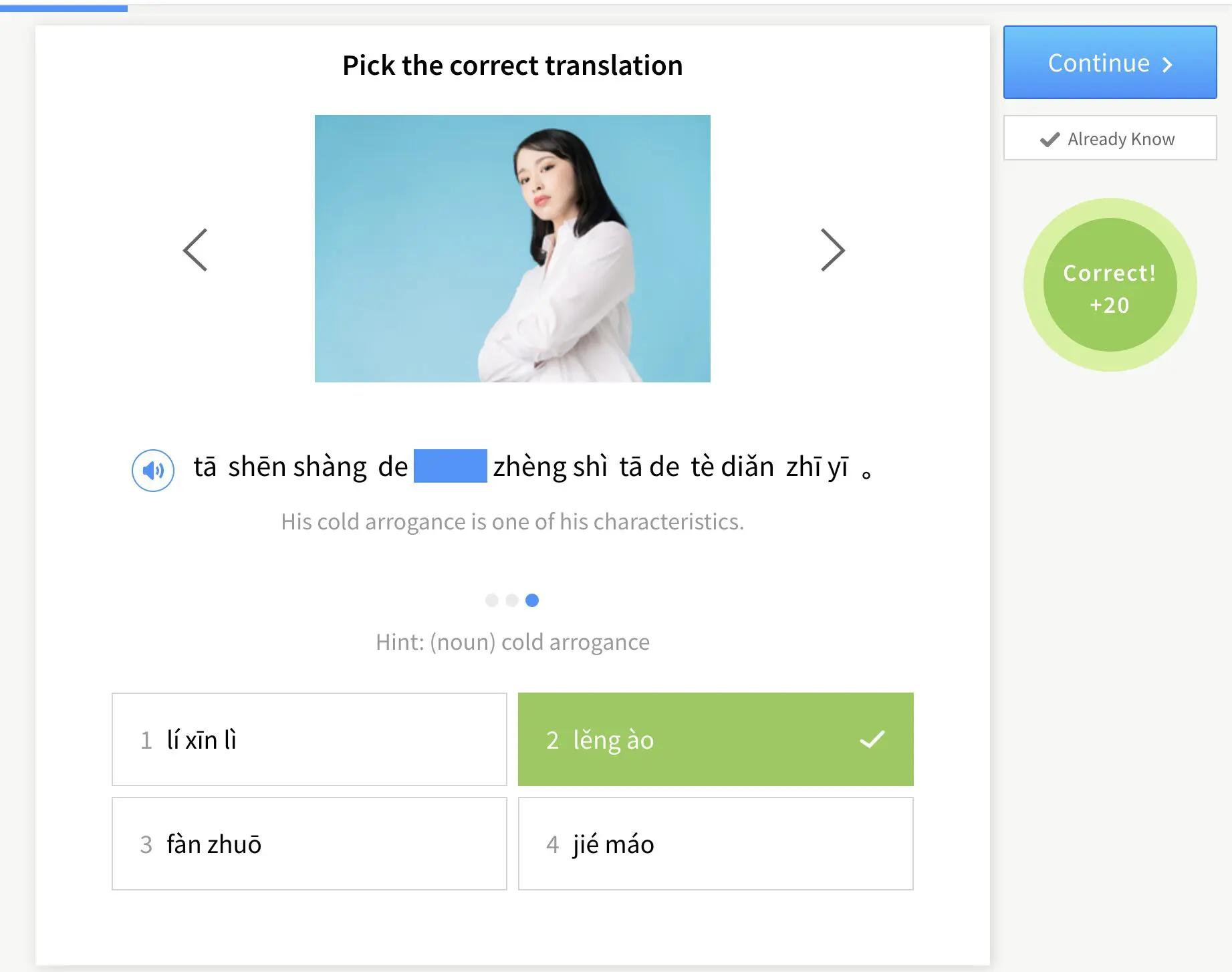What Is Pinyin? The Complete Beginner’s Guide

Truth be told, it’s possible to speak fluent Chinese without learning how to write a single Chinese character. It’s all thanks to 汉语拼音 (hàn yǔ pīn yīn) — Hanyu pinyin, or simply 拼音 — pinyin.
Pinyin is phonetic spelling of 汉字 (hàn zì) — Chinese characters, or the italicized text that follows 汉字 in our posts.
In fact, the first thing you should do if you want to speak Chinese is learn pinyin.
Download: This blog post is available as a convenient and portable PDF that you can take anywhere. Click here to get a copy. (Download)
From Zhuyin to Pinyin: A Brief History Lesson
Before Hanyu pinyin was in place, Chinese was romanized using the Wade-Giles system, composed of modified Latin letters.
Chinese speakers themselves used a system known as Zhuyin (colloquially “bopomofo”). Zhuyin was replaced in 1958 by the Romanized system we know as “Hanyu pinyin.”
Believe it or not, pinyin wasn’t invented for people learning Chinese as a foreign language; every single student in China learns pinyin at school. Today, most Chinese people use it for texting and typing.
While Zhuyin is still widely used in Taiwan, the switch to pinyin in China was significant.
Pinyin was developed by Chinese linguist Zhou Youguang and included in the education system by the Chinese government to improve the literacy rate in China.
The pinyin system standardized the Chinese language, boosted the country’s literacy rate and improved Chinese language learning for all.
What Is Pinyin?
The Oxford Dictionary defines pinyin as “the standard system of romanized spelling for transliterating Chinese.”
Basically, pinyin uses the Latin alphabet (the same one we use in English) to write Chinese words so you can learn their phonetics without needing to learn 汉字.
Pinyin is how Chinese words are pronounced, whereas Chinese characters are how they are seen in textbooks, newspapers, books, etc.
Both traditional Chinese (the characters used in Taiwan) and simplified Chinese (the characters used in China) can be represented using the same pinyin.
Pinyin is relatively simple to learn because it only involves three parts:
- Initials are consonants and represent sounds that appear at the beginning of a syllable.
- Finals are sounds that appear at the end of a syllable. These can be individual vowels, a combination of vowels or a combination of vowels and consonants.
- Tone marks show you how to pronounce each syllable. There are four tones—a flat tone, a rising tone, a dipping tone and a falling tone—plus a neutral fifth tone.
Tones, initials and finals are the building blocks of the Chinese language.
They can all be represented with the Latin letters you already know, and so pinyin has been an incredibly helpful tool for English speakers (and other users of the Latin alphabet) when learning Chinese.
The Easy Guide to Chinese Vowels in Pinyin | FluentU Chinese Blog
One can only go so far in their Chinese-learning journey without mastering vowels. From simple to compound vowels, this is your all-inclusive guide to pronouncing Chinese…
Pinyin Initials
First up, we’ll cover initials, which are essentially the consonants of pinyin. They’re called initials because they typically come first in a Chinese syllable.
Note that although there are more “letters” in pinyin than there are in the English alphabet—23 initials and 38 finals—they’re straightforward and never deviate much in pronunciation.
| Initial | Pronunciation | Example |
|---|---|---|
| b | "bwo" | 博 (bó) — extensive |
| p | "pwo" | 破 (pò) — to break, damage |
| m | "mwo" | 蘑菇 (mó gu) — mushroom |
| f | "fwo" | 佛教 (fó jiào) — Buddhism |
| d | "duh" | 德国 (dé guó) — Germany |
| t | "tuh" | 特别 (tè bié) — special |
| n | "nuh" | 呢 (ne) — modal particle |
| l | "luh" | 冷 (lěng) — cold, chilly |
| g | "guh" | 哥哥 (gē ge) — older brother |
| k | "kuh" | 可以 (kě yǐ) — can; may |
| h | "huh" | 喝 (hē) — to drink |
| j | "gee" | 计划 (jì huà) — to plan |
| q | "chee" | 七 (qī) — seven |
| x | "shee" | 西 (xī) — west |
| z | "tzi" | 字 (zì) — word |
| c | "tsi" | 次 (cì) — (number of) times |
| s | "si" | 四 (sì) — four |
| zh | "jur" | 只 (zhǐ) — only |
| ch | "chur" | 吃 (chī) — to eat |
| sh | "shur" | 是 (shì) — to be |
| r | "ur" | 日 (rì) — sun; day |
| w | "woo" | 五 (wǔ) — five |
| y | "ee" | 医生 (yī shēng) — doctor |
As you might have noticed, a few of these sounds don’t exist in English: q, c, zh, and r.
Pinyin Finals
Next up is the pinyin vowels, or finals, which make up the end part of a Chinese syllable.
Tone marks can only be placed over vowels, so you’ll always find the tone of a word over the final.
| Final | Pronunciation | Example |
|---|---|---|
| a | "ah" | 帮 (bāng) — to help |
| o | short "o" | 我 (wǒ) — I, me |
| e | "eh" | 也 (yě) — also |
| ai | "aye" | 爱 (ài) — love, to love |
| ei | "ey" | 累 (lèi) — tired |
| ao | "ow" | 要 (yào) — to want |
| ou | long "oh" | 有 (yǒu) — to have |
| an | "un" | 安静 (ān jìng) — quiet |
| ang | "ung" | 长 (cháng) — long |
| en | "en" | 很 (hěn) — very |
| eng | "eng" | 朋友 (péng you) — friend |
| ong | "ong" | 送 (sòng) — to deliver |
| er | "ar" | 儿子 (ér zi) — son |
| u | "oo" | 路 (lù) — road |
| ua | "oo + ah" | 话 (huà) — talk, speech |
| uo | "oo + o" | 错 (cuò) — error, mistake |
| uai | "oo + aye" | 快 (kuài) — fast |
| ui | "wey" | 会 (huì) — to be able to |
| uan | "oo + un" | 穿 (chuān) — to wear |
| uang | "oo + ung" | 撞 (zhuàng) — to collide |
| un | "oo + en" | 春天 (chūn tiān) — spring |
| i | "ee" | 你 (nǐ) — you |
| ia | "ee + ah" | 家 (jiā) — home |
| ie | "ye" | 街 (jiē) — street |
| iao | "ee + ow" | 鸟 (niǎo) — bird |
| iu | "yo" | 九 (jiǔ) — nine |
| ian | "ee + un" | 先 (xiān) — first |
| iang | "ee + ung" | 想 (xiǎng) — to want |
| in | "in" | 金 (jīn) — gold |
| ing | "ing" | 冰 (bīng) — ice |
| iong | "ee + ong" | 炯 (jiǒng) — bright |
| ü | "yu" | 去 (qù) — to go |
| üe | "yu + eh" | 月 (yuè) — moon |
| üan | "yu + un" | 远 (yuǎn) — far |
| ün | "yu + in" | 云 (yún) — cloud |
Note that the ü sound also applies when it’s preceded by certain initials, even though the pinyin syllable is written as u. Use the ü sound with the following consonants:
Other times, you’ll know to use this sound when there are two dots over the u, as in words like 绿色 (lǜ sè) — green, and 女 (nǚ) — woman.
The Pinyin Tones
The next step to learning pinyin is becoming familiar with the Chinese tones. There are four tones, plus a “neutral tone.”
Although the tones are most commonly referred to as either first, second, third or fourth, they can also be described by the sound they make.
But first, what exactly is a “tone”?
Just like in English, you can say Chinese words in a variety of different tones and pitches. However, in Chinese, the tone you use dictates the meaning of the word.
Let’s take the Chinese sound “ma” for example, and see all five ways you can pronounce it:
妈 (mā) — mom (first tone)
麻 (má) — numb (second tone)
马 (mǎ) — horse (third tone)
骂 (mà) — to scold (fourth tone)
吗 (ma) — question particle (“fifth tone”)
As you can see, these all have different meanings—even though they mostly look and sound the same. The difference is simply the tone.
The different marks above each “a” are called tone marks, and they indicate which tone you should use when saying the word.
Tones might seem intimidating at first, but I think you’ll be surprised how straightforward the Chinese phonetic system really is!
First Tone (–)
The first tone is also known as the “flat tone.” This means that you’ll pronounce it with a flat, high-pitched voice.
Here are some examples of Chinese words that use the first tone. Click on each character to hear the pronunciation:
妈妈 (mā ma) — mother
帮 (bāng) — help
街 (jiē) — street
哥哥 (gē ge) — older brother
Second Tone (/)
The second tone is also called the “rising tone,” and that’s precisely what your voice should do.
It sounds a lot like the way our pitch rises at the end of a sentence when we ask a question in English.
Here are some example words that use the second tone:
昨天 (zuó tiān) — yesterday
南瓜 (nán guā) — pumpkin
时间 (shí jiān) — time
同 (tóng) — same
Notice that the examples include words that use both the second and first tones. This is known as a tone pair—we’ll go over those in more depth soon!
Third Tone (∨)
The third tone—also known as the “dip tone“—requires you to dip your voice so that it becomes lower in the middle. It’s basically the fourth tone (falling) directly followed by the second (rising).
If you’ve ever uttered a nice, deep “uh…” out of confusion, sarcasm or sass, then you’ve already got the third tone down pat!
To see what I mean, listen to these words:
好 (hǎo) — good
你 (nǐ) — you
走 (zǒu) — to walk
里 (lǐ) — inside
Fourth Tone ()
Last but not least, we have the fourth tone, also known as the “falling tone.“
If you’ve ever firmly told someone, “No!” or yelled “Drop that!” at your dog, then you’re already acquainted with the fourth tone.
This tone starts high and then falls sharply, as demonstrated in the examples here:
爸爸 (bà ba) — father
去 (qù) — to go
做 (zuò) — to do
上 (shàng) — up
Fifth Tone
The fifth tone in Chinese is not really a tone, but the absence of tone.
Known as the “neutral tone,” the fifth tone applies to syllables that should be pronounced in a lighter or less emphasized manner. It is shorter in sound than the four previous tones, and the pinyin has no tone marking.
Many sentence-final particles use this tone, such as 吧 (ba).
However, you’ll also notice the neutral tone at the end of words, like the last two examples below. This is particularly common in the standard Beijing Mandarin pronunciation, though not the case everywhere.
的 (de) — of (possessive particle)
吗 (ma) — question particle
爸爸 (bà ba) — father
朋友 (péng you) — friend
Pinyin Tone Pairs
Tone pairs are exactly what they sound like—words that consist of two tones. These can be the same tone or different.
Let’s take a look at all of the Mandarin tone pairs out there (which really aren’t that many!).
First Tone Pairs
| Tone Pair | Example |
|---|---|
| first + first (– –) | 今天 (jīn tiān) — today |
| first + second (– /) | 今年 (jīn nián) — this year |
| first + third (– ∨) | 屋子 (wū zǐ) — house |
| first + fourth (– \) | 出去 (chū qù) — to go out |
Often, when the tone pair is “first + third,” native speakers will drop the third tone and make it a fifth (the neutral tone). So 屋子, which is technically wū zǐ, might sound more like wū zi.
Second Tone Pairs
| Tone Pair | Example |
|---|---|
| second + first (/ –) | 房间 (fáng jiān) — room |
| second + second (/ /) | 符合 (fú hé) — to mesh with, to conform to |
| second + third (/ ∨) | 牛奶 (niú nǎi) — milk |
| second + fourth (/ \) | 一下 (yí xià) — one moment, real quick |
If you’ve already learned numbers in Chinese, you might be wondering why 一 is pronounced with the second tone in that last example.
Well, the first tone on this word changes to a second tone when it’s followed by the fourth. 不 (bù), which means “no,” also changes to a second tone when followed by the fourth.
For example, you’d never say yì xià or bù kàn. Instead, you’d say yí xià and bú kàn.
Additionally, the word 一 will change to the fourth tone when followed by the first tone. For example:
一天 (yī tiān) — one day, becomes 一天 (yì tiān)
Lucky for you, 一 and 不 are the only Chinese words that change tones!
Third Tone Pairs
| Tone Pair | Example |
|---|---|
| third + first (∨ –) | 北京 (běi jīng) — Beijing |
| third + second (∨ /) | 警察 (jǐng chá) — police |
| third + third (∨ ∨) | 你好 (nǐ hǎo) — hello |
| third + fourth (∨ \) | 有趣 (yǒu qù) — interesting, fun |
Although 一 and 不 are the only words in Chinese that can change tones, there is one small rule that affects the pronunciation of the “third + third” tone pair.
You’ll never pronounce two third tones one after the other. Instead, the first syllable changes to the second tone. For example, the word 你好 is written in pinyin as nǐ hǎo but is actually pronounced ní hǎo.
Let’s look at a few more examples:
很好 (hěn hǎo) — very good is pronounced hén hǎo
水果 (shuǐ guǒ) — fruit is pronounced shuí guǒ
影响 (yǐng xiǎng) — influence is pronounced yíng xiǎng
Fourth Tone Pairs
| Tone Pair | Example |
|---|---|
| fourth + first (\ –) | 唱歌 (chàng gē) — to sing |
| fourth + second (\ /) | 问题 (wèn tí) — problem, question |
| fourth + third (\ ∨) | 汉语 (hàn yǔ) — Mandarin Chinese |
| fourth + fourth (\ \) | 动物 (dòng wù) — animal |
That’s about as straightforward as it gets! Not too bad, right?
Targeted Pinyin Drills
You may discover some pesky pronunciation issues that refuse to resolve themselves as you learn. It’s helpful to zero in on these with pinyin drills. Here are some pinyin drills for common issues.
nǐ shì bú shì chí dào le ma?
Chinese: 你是不是迟到了吗?
English: Are/Aren’t you late?
This is great for the retroflex sounds (e.g., shi, chi, zhi), which are a common issue for beginners.
chū qù
Chinese: 出去
English: To go out
The ü sound is probably the toughest pinyin sound—don’t feel bad if it takes weeks to really get it right. This drill really tests your understanding of the difference between the pinyin u and ü.
dà jiā yī qĭ shāng liang yī xià.
Chinese: 大家一起商量一下。
English: Everyone, let’s discuss for a bit.
Great for addressing the a sound, which beginners pronounce like “cat.” Instead, you should practice opening your mouth wide and pronouncing it like “ahh.”
wŏ xiăng măi yī liàng zì xíng chē.
Chinese: 我想买一两自行车。
English: I would like to buy a bicycle.
This is more of a Chinese tone drill rather than just a pinyin drill. It’s awesome because it’s a simple phrase that covers all of the tones.
Why Learn Pinyin?
If your goal is to learn how to speak Chinese fluently, you need to learn pinyin. Here are seven reasons why:
- To look up words. You’ll need to know Hanyu pinyin to search the dictionary for Chinese words you hear.
- For easier digital input. Even younger Chinese people use pinyin to type characters because it’s the fastest method.
- To build your foundations. Pinyin encompasses all of the potential sounds that can be made in Mandarin Chinese.
- To gain confidence. Chinese can be overwhelming at first, but pinyin gives words context and makes learning the language more manageable.
- For greater listening comprehension. When you can distinguish between the pinyin sounds, that means you’re listening with precision.
- For better pronunciation. People who can identify the pinyin for a word are usually more capable of pronouncing it correctly.
- To maximize your potential. Knowing pinyin will allow you to differentiate similar-sounding Chinese words with drastically different meanings—a requirement for becoming fluent.
Resources to Practice Pinyin
Pinyin Charts
A good pinyin chart or Hanyu pinyin table will help you listen to and review the proper sounds.
I recommend this interactive pinyin chart. It includes every possible sound in Chinese. Click on any of the syllables to hear it pronounced in all four tones.
Pinyin charts will help you differentiate between the different pinyin sounds. Repeat each sound out loud and you’ll be that much closer to perfecting your Chinese pronunciation.
Pinyin Apps
Remember how I said that learning pinyin will help you look up words in Chinese? Now you just need to get a reliable pinyin dictionary app to find out the meaning of those new words you hear.
Additionally, you can find various pinyin trainer apps with quizzes to help you improve your listening comprehension. And if you don’t know the word, you can look it up in your new handy dictionary app!
Pinyin Input and Keyboards
To type or text in Chinese, you’ll need to have the correct way to input the language. That’s where Chinese keyboards come in handy.
While you won’t learn new words from looking at the keys, you’ll need to know proper pinyin in order to type words. Writing anything at all in Chinese is then a great way to practice pinyin.
Pinyin Practice Games
Not only are practice games a great way to learn and review pinyin, they’re also fun!
Instead of flipping through flashcards or reading a list, play games to help you recall the spelling of each pinyin sound and recognize them when you hear them.
Tip: Try to switch between passively identifying the correct pinyin and actively providing it on your own when you can.
5 Pinyin Practice Games to Improve Chinese Pronunciation | FluentU Chinese Blog
A pinyin practice game can help you master the romanization of Chinese words and have fun with your Mandarin learning at the same time. If pinyin is throwing you for a…
Language Exchange Tools
Live interaction and—most importantly—specific feedback about your pronunciation and mistakes are absolutely necessary if you want to learn Chinese well. Doing this regularly will help your Mandarin skills soar and ensure you don’t form any bad language habits.
A tutor is a great resource for practice because they have experience teaching Chinese to non-native speakers and can help you identify what you need to work on. Additionally, you can find a native Chinese speaker to be your language exchange partner.
Make sure you ask your tutor and/or language partner to point out your mistakes and how to fix them. Then, continue to practice alone and with a native speaker on a consistent basis. Mastering pinyin is a habit like any other.
https://www.fluentu.com/blog/chinese/chinese-tutor-online/
Chinese Tongue Twisters
Tongue twisters are the ultimate pronunciation test across languages. You can use Mandarin tongue twisters to help you master the pinyin sounds.
Although Chinese tongue twisters do incorporate tones, they’re still good practice for beginners. If you want to just work on differentiating pinyin sounds, you can take out the tones at the beginning.
20 Chinese Tongue Twisters for Pronunciation Practice [Audio Included]
No matter the language, tongue twisters— 绕口令 (rào kǒu lìng)—are a fun way to help with pronunciation,…
Mandarin Chinese Songs
Music is a creative way to memorize anything and everything, and pinyin pronunciation is no exception. And you don’t have to worry about tones, since they’re not often heard in Mandarin songs.
You can turn your music video habit into a personal karaoke learning session by finding Chinese music videos with pinyin subtitles!
Learn Chinese with Songs: 15 Mandopop Hits for Fun Listening Practice | FluentU Chinese Blog
Learn Chinese with songs for some memorable language practice! Check out these 15 well-known Mandarin Chinese songs that span different genres, from rock songs to romantic…
Mandarin Chinese Media
Chinese pronunciation can be tricky at first, but the key is getting lots of real-world practice with speaking and listening.
I’m a big fan of using Chinese movies, dramas and TV shows—and they really help. When people compliment my Chinese, they point out that I have amazing pronunciation, which I learned from listening to Mandarin media (and then practicing!).
If full movies or shows are too intimidating, try starting with shorter clips. The videos on FluentU, for example, are clips from real subtitled Chinese media.
FluentU takes authentic videos—like music videos, movie trailers, news and inspiring talks—and turns them into personalized language learning lessons.
You can try FluentU for free for 2 weeks. Check out the website or download the iOS app or Android app.
P.S. Click here to take advantage of our current sale! (Expires at the end of this month.)
So, pinyin is an essential step for learning Chinese, and it’s actually pretty straightforward.
Get the right tools, teachers and habits, and you can learn Chinese pinyin too!
Download: This blog post is available as a convenient and portable PDF that you can take anywhere. Click here to get a copy. (Download)
And One More Thing…
If you’re like me and prefer learning Chinese on your own time, from the comfort of your smart device, I’ve got something you’ll love.
With FluentU’s Chrome Extension, you can turn any YouTube or Netflix video with subtitles into an interactive language lesson. That means you can learn from real-world content, just as native Chinese speakers actually speak.
You can even import your favorite YouTube videos into your FluentU account. If you’re not sure where to start, check out our curated library of videos that are handpicked for beginners and intermediate learners, as you can see here:
FluentU brings native Chinese videos within reach. With interactive captions, you can tap on any word to see an image, definition, pronunciation, and useful examples.
You can even see other videos where the word is used in different contexts and add new words to your flaschards. For example, if I tap on the word 喝 (hē), this is what pops up:
Want to make sure you really remember what you've learned? We’ve got you covered. Practice and reinforce the vocab from each video with learn mode. Swipe to see more examples of the word you’re learning, and play mini-games with our dynamic flashcards.
The best part? FluentU tracks everything you’re learning and uses that to create a personalized experience just for you. You’ll get extra practice with tricky words and even be reminded when it’s time to review—so nothing slips through the cracks.
Start using the FluentU website on your computer or tablet or, better yet, download our app from the App Store or Google Play.
Click here to take advantage of our current sale! (Expires at the end of this month.)












